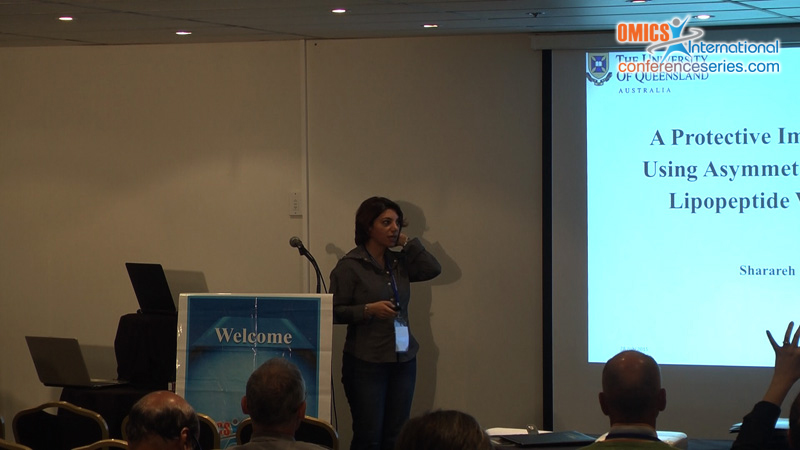
Sharareh Eskandari
University of Queensland, Australia
Title: A Protective Immune Response Using Asymmetric Multi-Epitope Self-Adjuvanting lipopeptide Vaccine Model
Biography
Biography: Sharareh Eskandari
Abstract
Adjuvant development is crucially important area of research for improving subunit vaccines. It is important to understand the impact of physicochemical properties of vaccine on immune response to fulfil development of a delivery system with robust protection against infection and tumour. Here, we synthesised a library of lipopeptide (LP) vaccine constructs to contain an asymmetrical arrangement of peptide epitopes (OVA CD4 and OVA CD8) to determine the optimal architecture for stimulation of a potent cell mediated response. C12 or C16 lipoamino acids were included in different locations of the constructs. The constructs were self-assembled in PBS and characterised. C57BL/6 mice were immunised with vaccine constructs following adoptive transfer of congenic (CD45.1) ovalbumin specific OT-I and OT-II T cells. Frequency of proliferation of OT-I and OT-II cells in naïve mice were determined using FACS analysis. Then, the effector function of activated OT-I cells in response to the vaccine constructs were evaluated by cytotoxic T lymphocyte assay. Following immunisation, mice were challenged by subcutaneous injection on their abdomen with tumour cells expressing ovalbumin and investigated for inhibition of tumour growth. Furthermore, an IFN-É£ ELISpot assay was performed to enumerate the antigen-specific effector cells secreting IFN-É£. Results showed that constructs with C16 lipids at the N-terminus formed long β-sheet fibrils and induced higher CD8+ T cell proliferation and IFN-É£ secretion compared with constructs containing internal placement of lipids. Constructs with small nanoparticles or beta-sheet secondary structures showed high cytolytic activity and tumour growth inhibition (Figure 1). Future direction aim to investigate the impact of these particles on humoral immune response in vivo.


